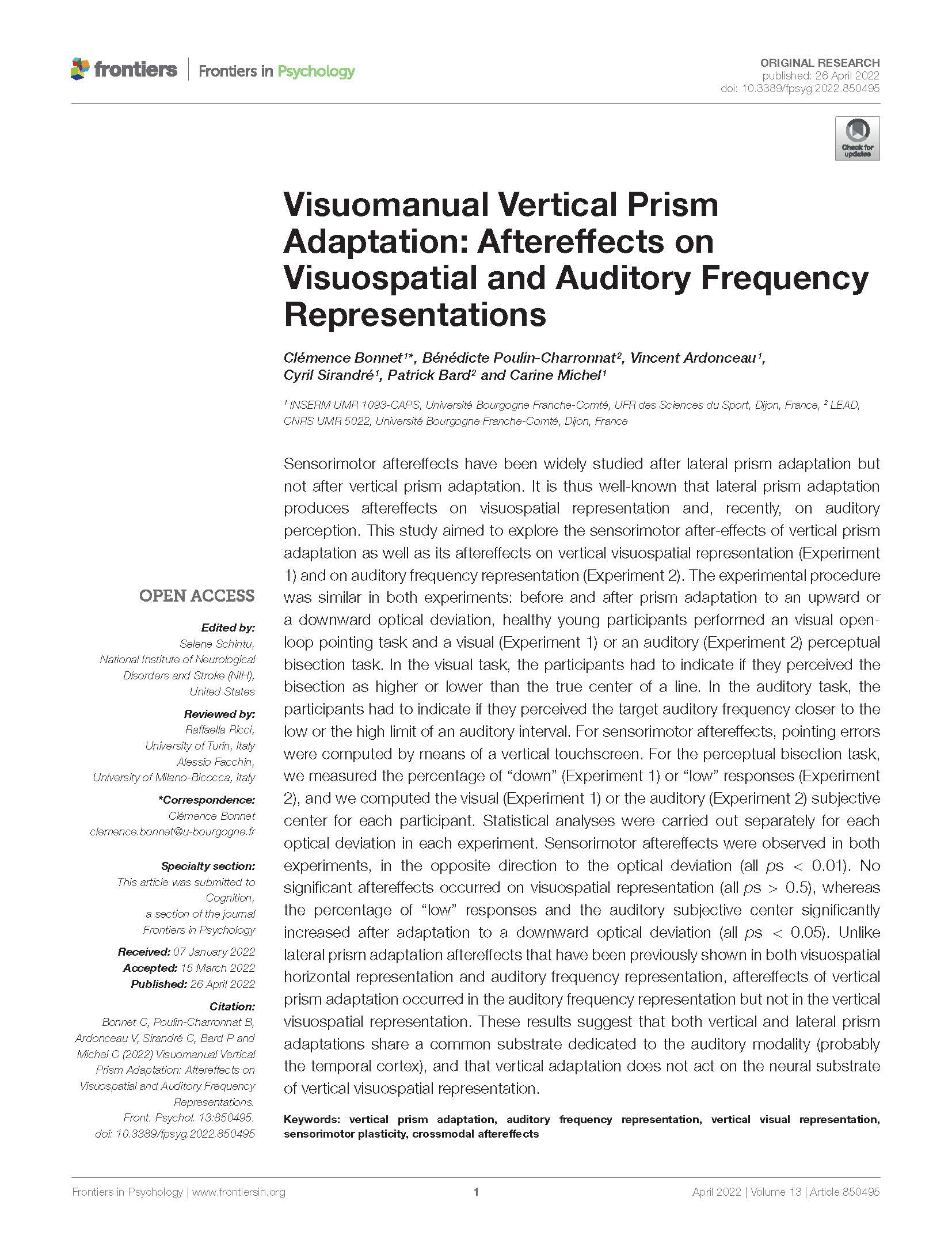Sensorimotor aftereffects have been widely studied after lateral prism adaptation but not after vertical prism adaptation. It is thus well-known that lateral prism adaptation produces aftereffects on visuospatial representation and, recently, on auditory perception. This study aimed to explore the sensorimotor after-effects of vertical prism adaptation as well as its aftereffects on vertical visuospatial representation (Experiment 1) and on auditory frequency representation (Experiment 2). The experimental procedure was similar in both experiments: before and after prism adaptation to an upward or a downward optical deviation, healthy young participants performed an visual openloop pointing task and a visual (Experiment 1) or an auditory (Experiment 2) perceptual bisection task. In the visual task, the participants had to indicate if they perceived the bisection as higher or lower than the true center of a line. In the auditory task, the participants had to indicate if they perceived the target auditory frequency closer to the low or the high limit of an auditory interval. For sensorimotor aftereffects, pointing errors were computed by means of a vertical touchscreen. For the perceptual bisection task, we measured the percentage of “down” (Experiment 1) or “low” responses (Experiment 2), and we computed the visual (Experiment 1) or the auditory (Experiment 2) subjective center for each participant. Statistical analyses were carried out separately for each optical deviation in each experiment. Sensorimotor aftereffects were observed in both experiments, in the opposite direction to the optical deviation (all ps < 0.01). No significant aftereffects occurred on visuospatial representation (all ps > 0.5), whereas the percentage of “low” responses and the auditory subjective center significantly increased after adaptation to a downward optical deviation (all ps < 0.05). Unlike lateral prism adaptation aftereffects that have been previously shown in both visuospatial horizontal representation and auditory frequency representation, aftereffects of vertical prism adaptation occurred in the auditory frequency representation but not in the vertical visuospatial representation. These results suggest that both vertical and lateral prism adaptations share a common substrate dedicated to the auditory modality (probably the temporal cortex), and that vertical adaptation does not act on the neural substrate of vertical visuospatial representation.
Visuomanual vertical prism adaptation: Aftereffects on visuospatial and auditory frequency representations
